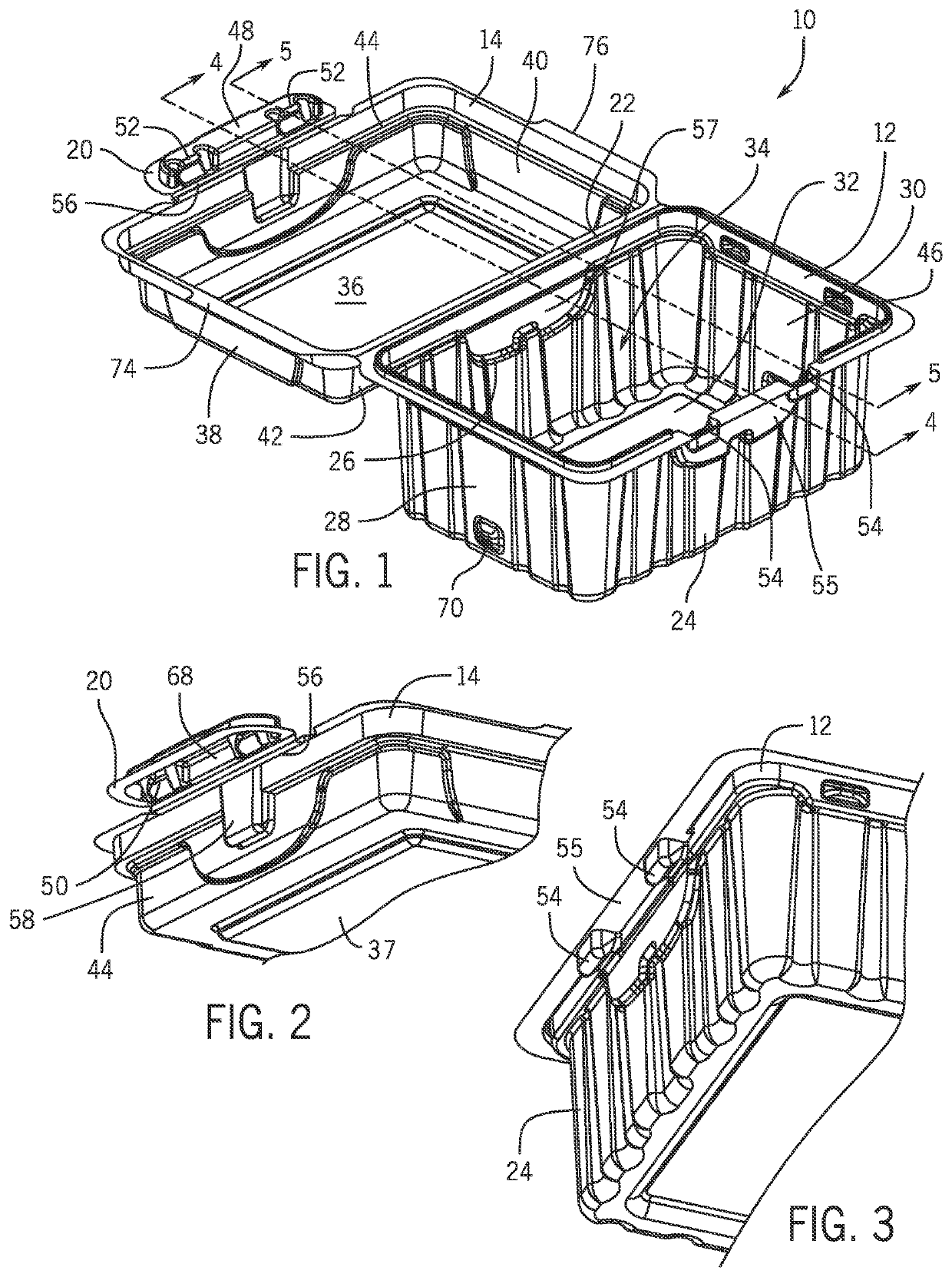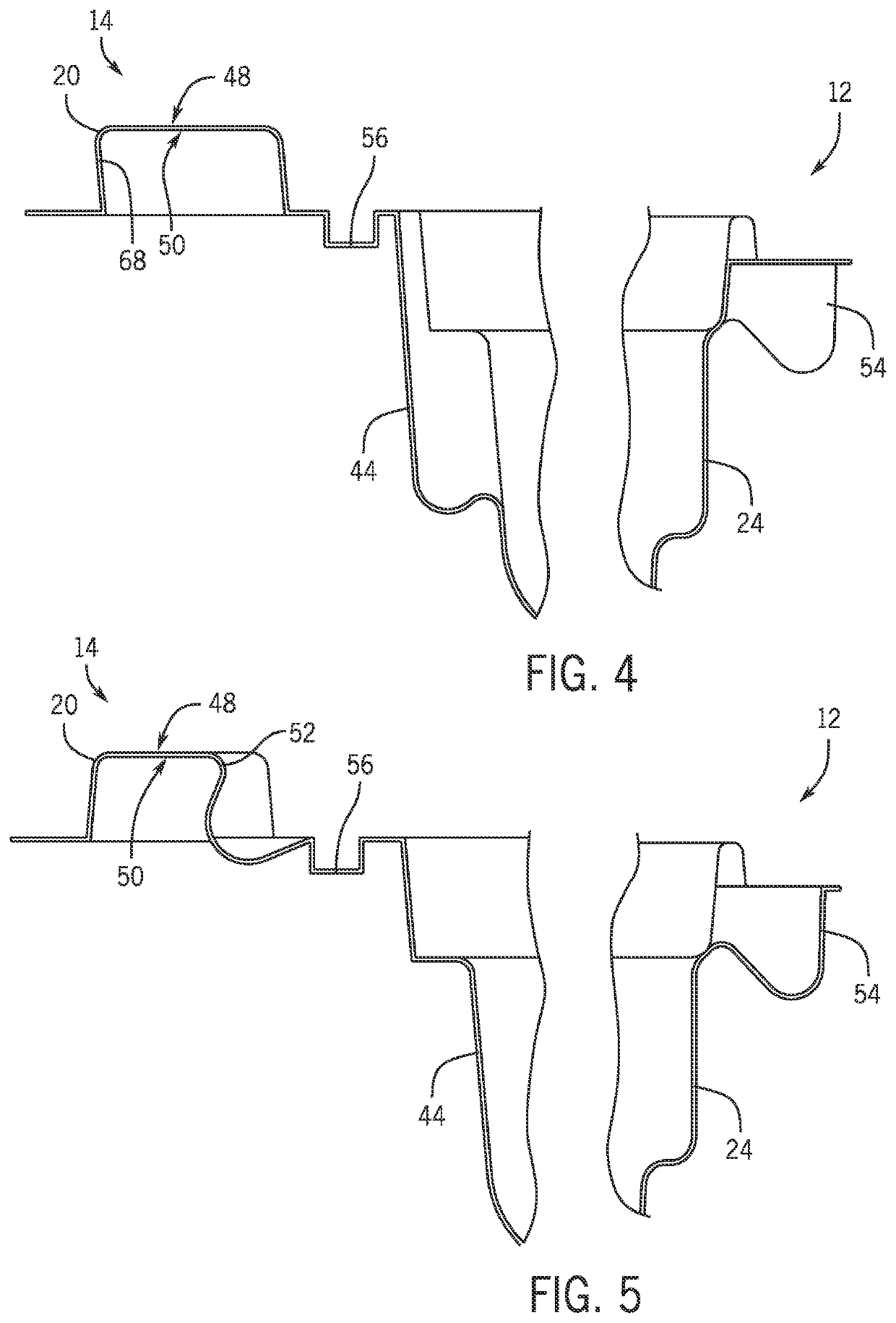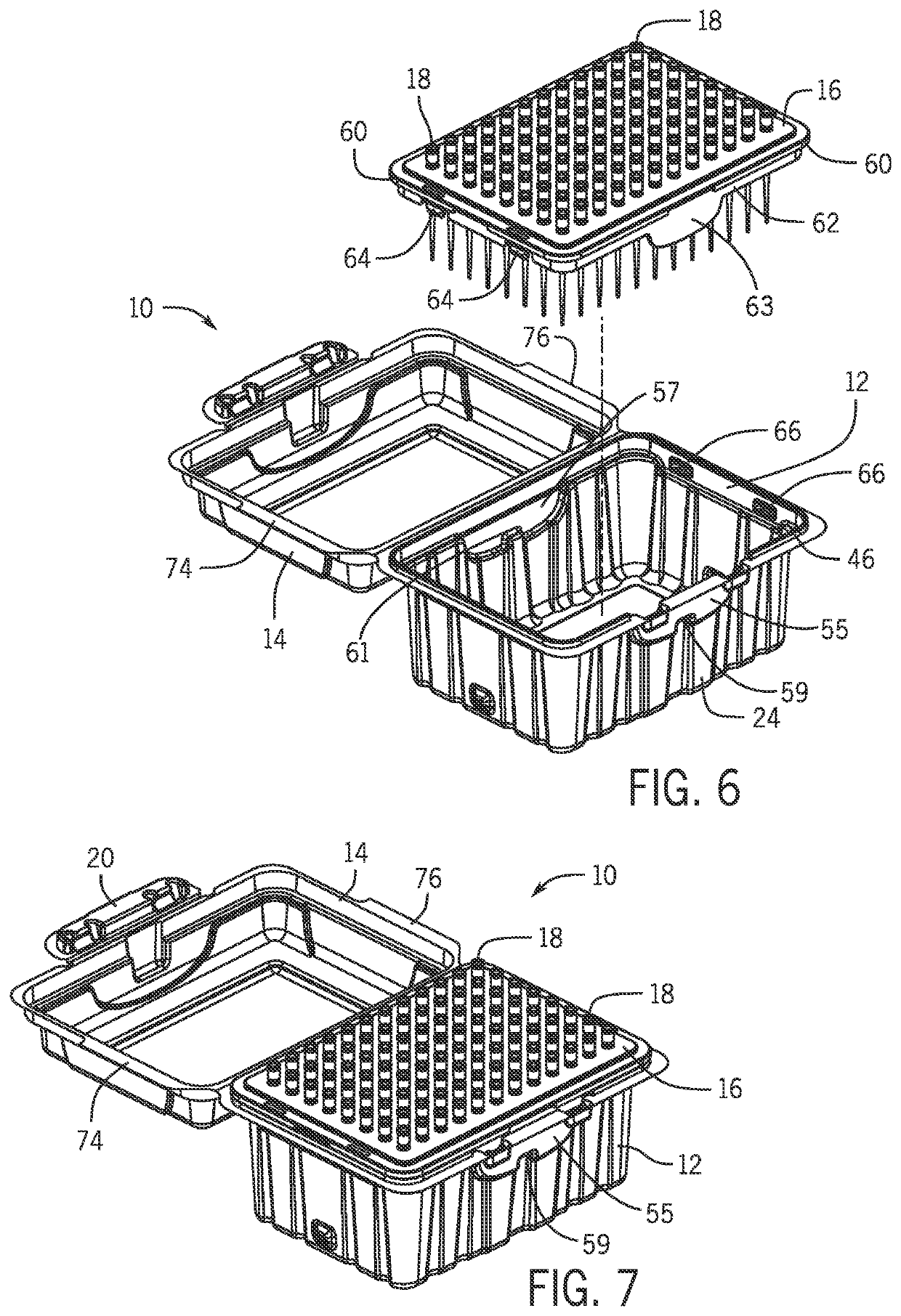Pipette tip rack system
a tip rack and pipette technology, applied in the field of pipette tip racks, to achieve the effect of convenient access, convenient cover of remaining tips, and convenient one-touch operation
- Summary
- Abstract
- Description
- Claims
- Application Information
AI Technical Summary
Benefits of technology
Problems solved by technology
Method used
Image
Examples
Embodiment Construction
[0061]FIG. 1 illustrates a thermoformed clamshell tip container 10 that is constructed in accordance with an exemplary embodiment of the invention. The tip container 10 includes a lower receptacle 12 and an upper lid 14, which are connected together with a hinge 22. The lower receptacle 12 includes a front wall 24, a rear wall 26, lateral side walls 28, 30 and a bottom wall 32. The bottom wall 32, the lateral side walls 28, 30 and the front 24 and rear 26 walls define a well 34 for storing pipette tips. The bottom wall 32 has a raised flat, rectangular portion 33 surrounded by an outer portion 35 that supports the container 10 when it sits on a flat surface. The raised or recessed flat portion 33 fits over a raised rectangular portion 37 (FIG. 2) of the lid to facilitate stable multi-container stacking. The lateral side walls 28 and 30, and the front wall 24 and the rear wall 26 include strengthening ribs. The lid 14 on the clamshell tip container 10 includes a top wall 36, lateral ...
PUM
 Login to View More
Login to View More Abstract
Description
Claims
Application Information
 Login to View More
Login to View More - R&D
- Intellectual Property
- Life Sciences
- Materials
- Tech Scout
- Unparalleled Data Quality
- Higher Quality Content
- 60% Fewer Hallucinations
Browse by: Latest US Patents, China's latest patents, Technical Efficacy Thesaurus, Application Domain, Technology Topic, Popular Technical Reports.
© 2025 PatSnap. All rights reserved.Legal|Privacy policy|Modern Slavery Act Transparency Statement|Sitemap|About US| Contact US: help@patsnap.com



